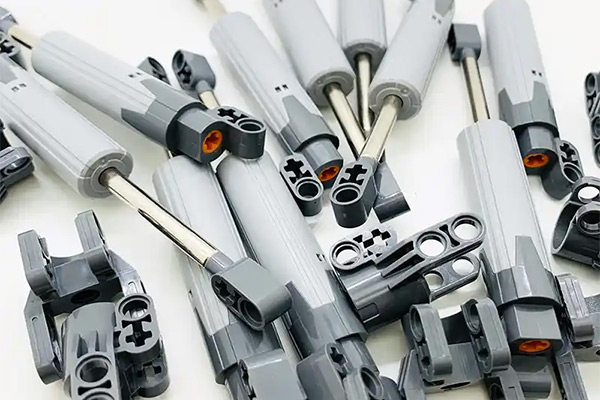How to choose the electric actuator? 12V linear actuator or 24V linear actuator?
Linear actuators are crucial components in various automation and motion control applications, converting rotational motion into linear motion. When choosing a linear actuator, voltage is a key consideration, with the most common being 12V DC and 24V DC. Understanding the differences between them is essential for selecting the right actuator for a specific application.
12V vs. 24V Linear Actuators: Key Differences
While both voltage types of linear actuators achieve linear motion, they have significant differences in terms of performance, applications, and system requirements.
1. Power Output and Load Capacity
24V linear actuators generally have higher power output, meaning they can generate greater force and handle heavier loads. This is because, for the same power, a higher voltage means lower current.
12V linear actuators are typically suitable for light to medium-duty load applications.
2. Speed
In most cases, 24V actuators are faster than 12V actuators. Higher voltage allows for greater current flow through the motor, leading to faster motor RPM and quicker actuator movement.
3. Current Consumption
24V actuators consume less current for a given power output due to their higher voltage. This is an advantage for applications with long cable runs or where reducing cable size to save costs is desired. Lower current also means less energy loss and less heat generation.
12V actuators will draw higher current for the same power output. This means thicker cables are needed to handle the larger current and avoid voltage drop and overheating.
4. Cable Size and Wiring
Due to lower current, 24V actuators can often use thinner cables. This can simplify wiring, reduce material costs, and decrease installation space.
12V actuators require thicker cables to carry the higher current, especially for long cable runs, to avoid significant voltage drops that can affect actuator performance.
5. System Integration
24V systems are more common in industrial automation and many existing machinery setups, allowing 24V actuators to integrate more seamlessly into these systems.
12V systems are more prevalent in vehicles, battery-powered devices, and smaller, portable applications.
6. Noise Level
Generally, the noise level of a linear actuator depends more on its internal gearing and motor design than on the voltage itself. However, in some cases, a 24V actuator operating at lower current might be relatively quieter as it generates less heat and potentially associated mechanical stress.
7. Cost
Typically, the initial cost of a 24V actuator might be slightly higher than a 12V actuator due to its higher performance. However, considering long-term operational efficiency and wiring costs, 24V might be more cost-effective in certain applications.
Under what circumstances should you choose a 12V actuator
Choosing a 12V linear actuator is typically based on the following considerations:
Power Source Availability: If your application primarily relies on a 12V DC power source, such as car batteries, solar panel systems, or standard vehicle power, then a 12V actuator is the ideal choice.
Light-Duty Applications: For applications that don't require high load capacity or extremely high speeds, such as small robotic projects, home automation (like opening/closing curtains, lifting TV mounts), furniture adjustment, or hobby projects, 12V actuators are often sufficient.
Space and Cost Constraints: In situations where space is limited or the budget is tight, 12V actuators might be more appealing due to their compact size and lower initial cost.
Safety: Lower voltage generally implies a lower risk of electrical shock.
Under what circumstances should you choose a 24V actuator
Choosing a 24V linear actuator is typically based on the following considerations:
High Load and Force Requirements: For applications needing to move heavy objects or exert high push/pull forces, such as industrial automation, heavy machinery (e.g., agricultural equipment, construction machinery), large gate or valve control, 24V actuators provide the necessary power.
High-Speed Requirements: If the application demands fast and efficient motion, 24V actuators generally offer quicker extension and retraction speeds.
Long Cable Runs: In scenarios where the power source is far from the actuator, 24V systems, due to their lower current, can reduce voltage drop and allow for the use of thinner cables, saving cost and simplifying installation.
Integration into Existing 24V Systems: Many industrial and commercial systems already utilize 24V DC as a standard control voltage, allowing 24V actuators to integrate seamlessly, simplifying power management and control.
Efficiency and Reliability: Lower current draw means less energy loss and cooler operating temperatures, contributing to greater actuator efficiency and extended lifespan, especially in continuously running applications.
In summary, 12V and 24V linear actuators each have their strengths and are suited for different applications. 12V linear actuators are better for smaller, lighter-duty, cost-sensitive applications or those relying on existing 12V power sources. 24V linear actuators excel where higher power, faster speeds, heavy load handling, or integration into industrial 24V systems are required. When choosing, always weigh the pros and cons based on your specific application needs, including load, speed, power availability, wiring length, and budget.
-

How to choose the electric actuator? 12V linear actuator or 24V linear actuator?
-

How to choose the electric actuator? 12V linear actuator or 24V linear actuator?
-

How to choose the electric actuator? 12V linear actuator or 24V linear actuator?
-

How to choose the electric actuator? 12V linear actuator or 24V linear actuator?

